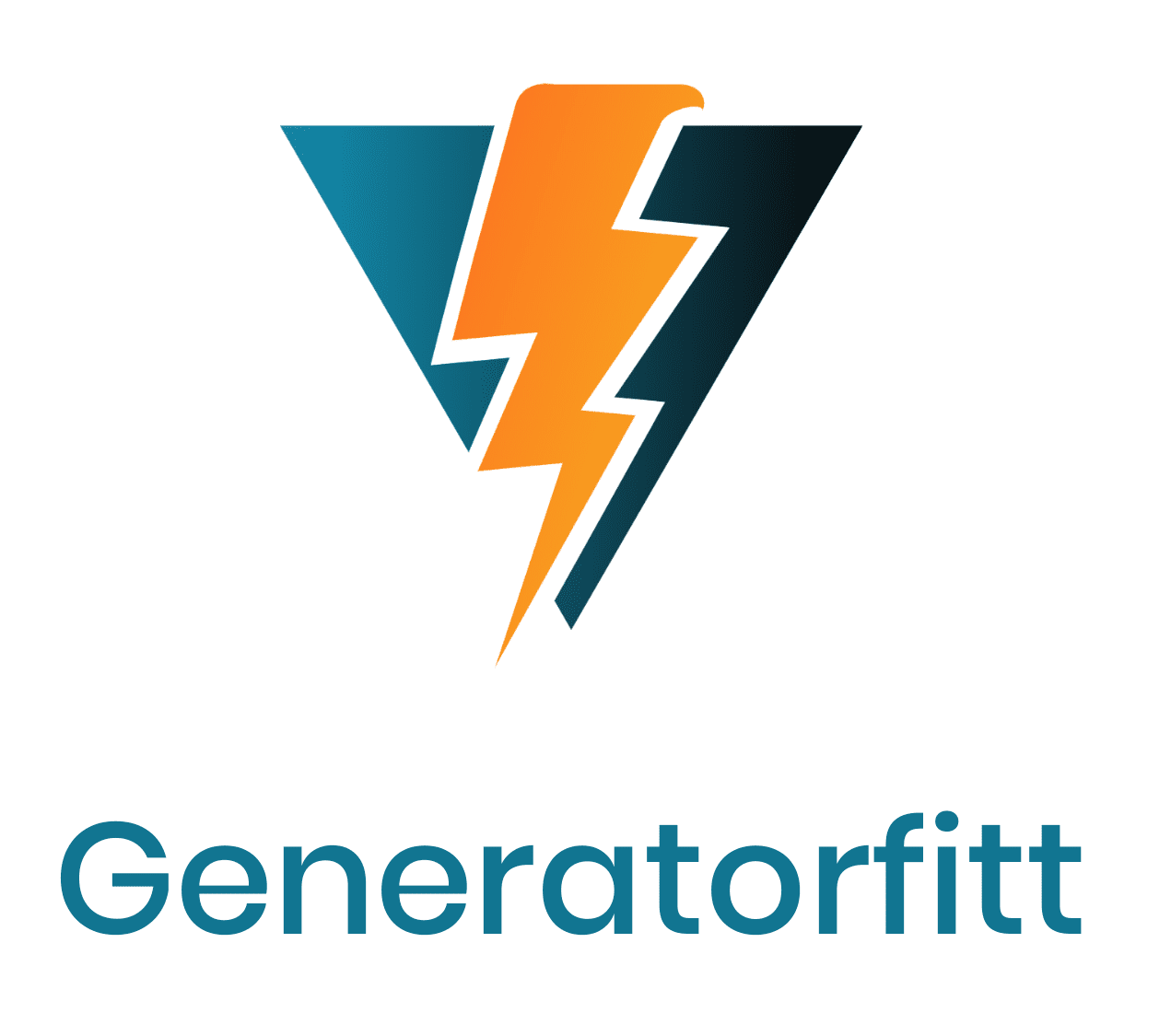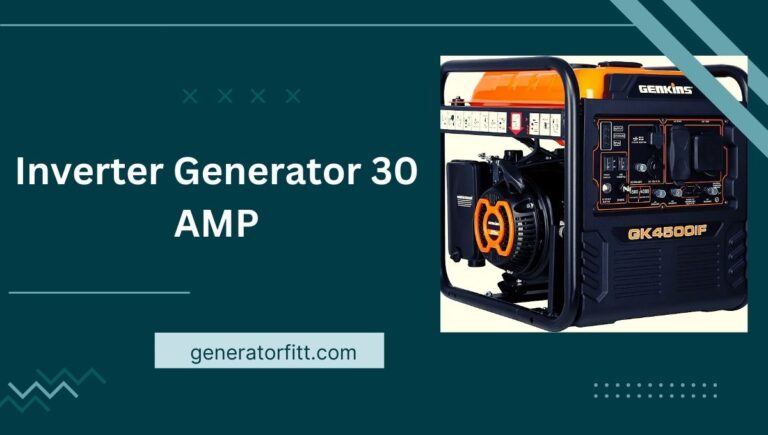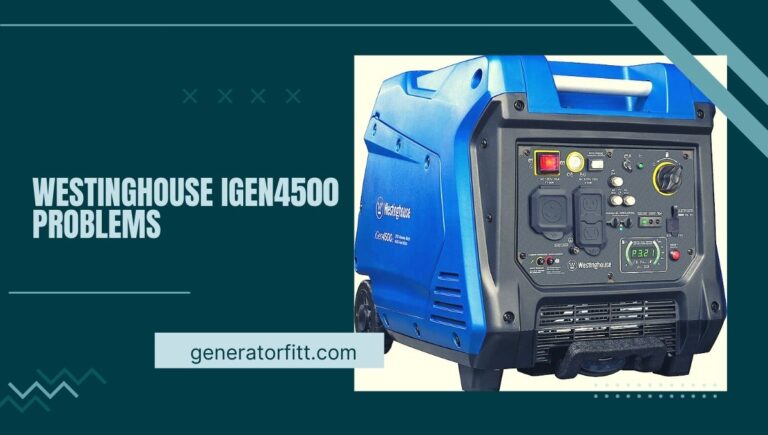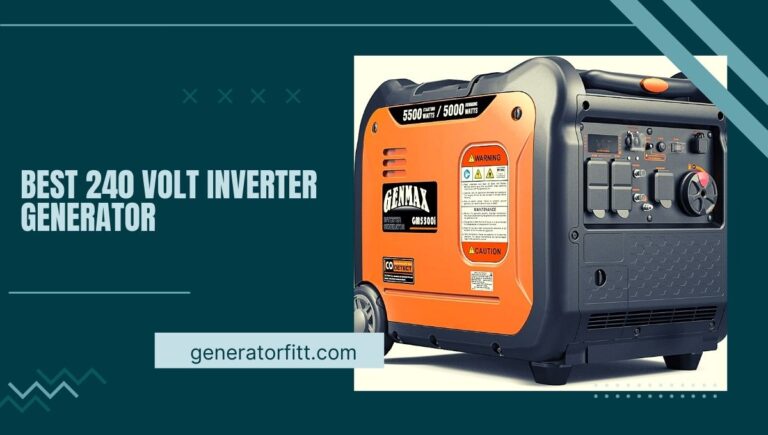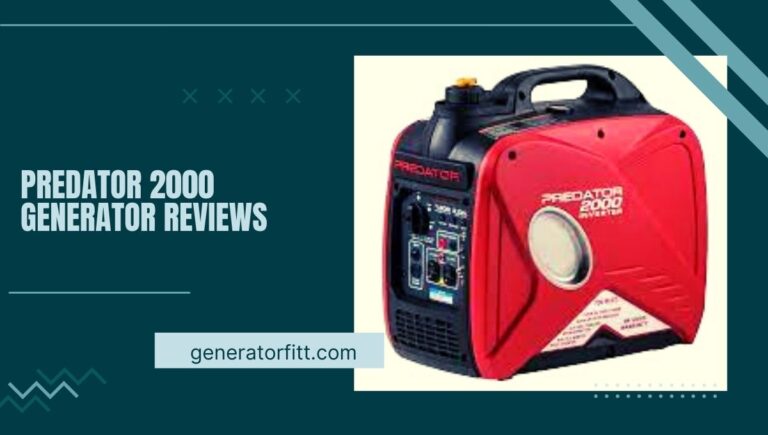4 Best PTO Generator Reviews (Buyer’s Guide) In 2023
Whether you’re camping in the great outdoors, experiencing an unexpected power outage, or working on a construction site far from electrical grids, a PTO (Power Take-Off) generator can be your lifeline.
This comprehensive guide explores the world of PTO generators, their benefits, types, and key considerations for choosing the best PTO generator for your specific needs.

Best Pto Generator Picks in 2023
Here are the Top 4 PTO Generators Reviews:
16000 Peak/15000 Running Watts Tractor-Driven PTO Generator Special
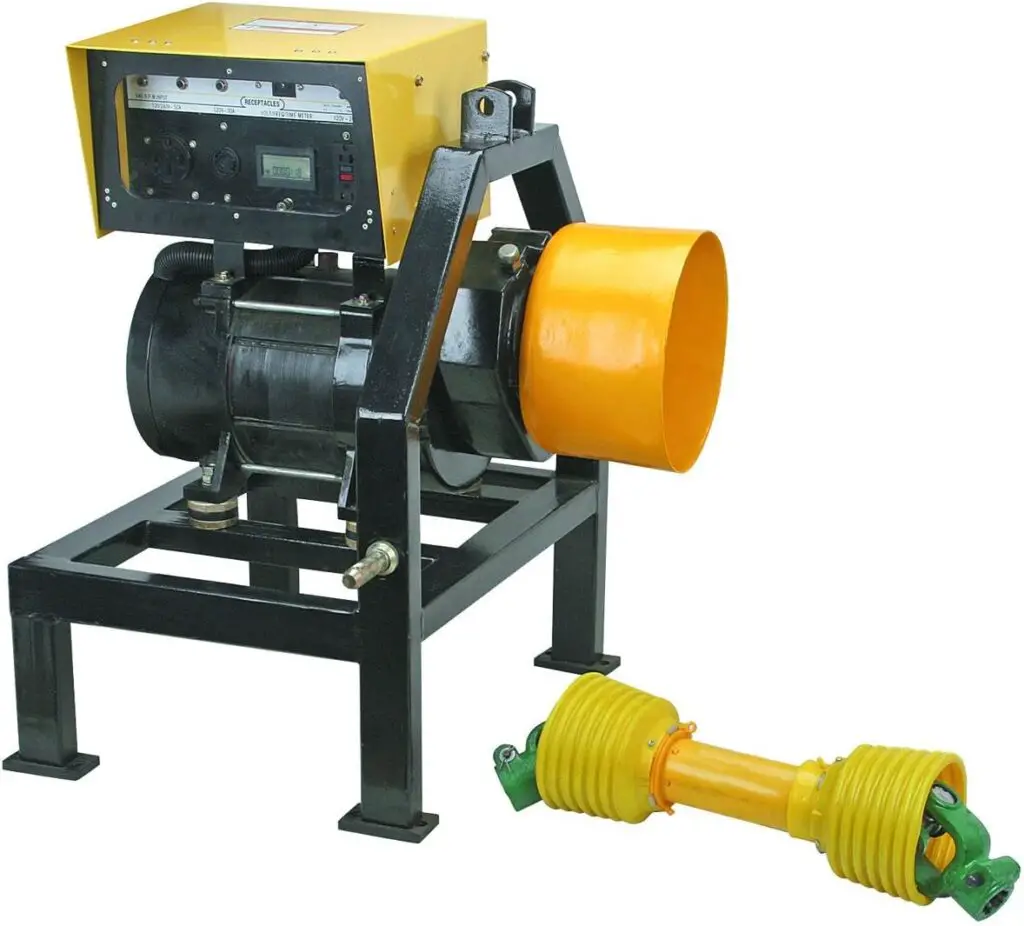
A tractor-driven PTO (Power Take-Off) generator is a type of generator that is powered by the output shaft of a tractor’s engine. This can be a convenient and cost-effective way to generate electricity, especially in rural or remote areas where access to traditional power sources may be limited. The “16000 Peak/15000 Running Watts” specification you provided likely refers to the power output capacity of this generator.
Here’s what those specifications mean:
- Peak Watts (or Maximum Watts): This is the maximum power output that the generator can provide for a short duration, typically for starting up electric motors or other equipment with high initial power demands. In your case, the generator can deliver up to 16,000 watts for brief periods.
- Running Watts (or Continuous Watts): This is the continuous power output capacity of the generator under normal operating conditions. In your case, the generator can sustain a load of up to 15,000 watts over an extended period.
Tractor-Driven PTO Generator 15000 Watt 15KW Continuous Run
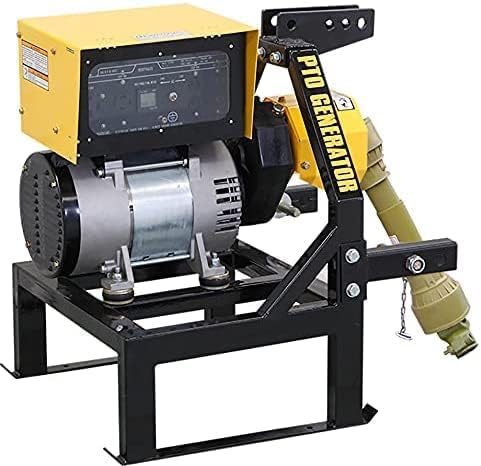
A tractor-driven PTO generator with a 15,000-watt (15KW) continuous run capacity is designed to generate a consistent electrical output of 15,000 watts of power for an extended period without overheating or experiencing issues.
Here are some key points to consider about this generator:
- Continuous Run Capacity: This generator is rated to provide 15,000 watts of continuous power. This means it can supply a steady electrical output at this level for as long as it is needed, as long as the tractor’s PTO can maintain the required speed and load.
- Tractor-Driven: As the name suggests, this generator is powered by connecting it to the power take-off (PTO) shaft of a tractor. The generator derives its mechanical power from the tractor’s PTO, which typically operates at a standardized speed (e.g., 540 RPM or 1,000 RPM). It’s essential to ensure your tractor’s PTO speed matches the generator’s requirements.
- Applications: Such generators are commonly used in agricultural settings, construction sites, and other locations where tractors are readily available. They are versatile and can power various electrical equipment, including tools, lighting, and even small appliances in remote or off-grid areas.
- Maintenance: Regular maintenance is essential to ensure the generator’s longevity and reliable operation. This includes oil changes, fuel management, and safety checks to prevent accidents and equipment damage.
- Electrical Load: Make sure the generator can handle the specific electrical load you intend to connect. You may need to consider the starting (surge) power requirements of your equipment, in addition to the continuous power needs.
- Safety: When operating a tractor-driven PTO generator, follow safety guidelines, and ensure all connections and electrical installations are secure and compliant with safety standards.
NorthStar Pto Generator – 27,500 Surge Watts, 24,000 Rated Watts, 48 HP Required
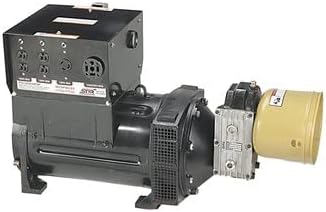
This NorthStar PTO Generator is a high-capacity unit designed for heavy-duty applications. It is typically used in industrial or agricultural settings where a substantial and continuous power supply is required.
This generator can be connected to the PTO shaft of a compatible tractor with the appropriate horsepower output to meet your electrical power needs. The NorthStar PTO Generator you’ve mentioned has the following specifications:
Key Features
- Surge Watts: This generator can provide a maximum power output of 27,500 watts (27.5 kW) during short-term surges or when there’s a sudden spike in power demand. This surge power is useful for starting electric motors or handling peak loads.
- Rated Watts: The continuous or rated power output of this generator is 24,000 watts (24 kW). This is the amount of power it can provide on an ongoing basis without overheating or experiencing issues.
- 48 HP Required: To operate this generator, you would need a tractor with a power take-off (PTO) output of at least 48 horsepower. The generator draws mechanical power from the tractor’s PTO, and having a tractor with a minimum of 48 HP ensures that it can provide the necessary power to drive the generator effectively.
PTO Powered Generator 15kw 3 point Requires a tractor
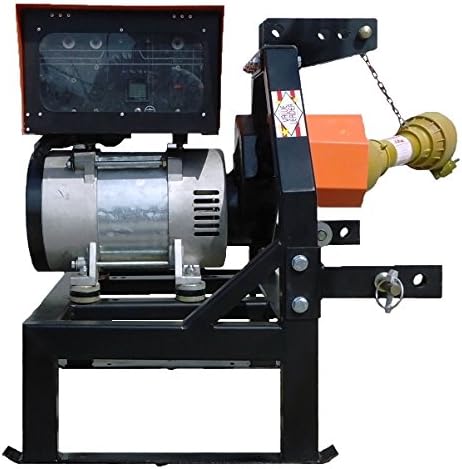
It’s important to ensure that the tractor’s PTO speed and power output are compatible with the generator’s requirements. Additionally, consider the specific electrical load you intend to connect to the generator, including both continuous (running) and surge power requirements.
Proper maintenance and safety practices are also crucial when using a PTO-powered generator in conjunction with a tractor. A PTO (Power Take-Off) powered generator rated at 15kW (15,000 watts) and designed for a 3-point hitch connection typically requires a tractor to operate.
Here are some key details:
- Power Output: This generator can provide a continuous power output of 15,000 watts, making it suitable for a range of applications that require a substantial and continuous power source.
- PTO Driven: As the name suggests, it’s powered by connecting it to the PTO shaft of a tractor. The PTO shaft provides the mechanical power needed to turn the generator and produce electricity. The PTO typically operates at a standard speed, such as 540 RPM (revolutions per minute) or 1,000 RPM.
- 3-Point Hitch: The 3-point hitch is a tractor attachment that allows you to connect and control various implements and equipment. In the case of a PTO generator, the 3-point hitch is used to secure and stabilize the generator to the tractor, ensuring safe and efficient operation.
- Tractor Required: To use this type of generator, you need a tractor with a compatible PTO and the ability to support the generator’s power requirements. The tractor provides the mobility and power source for the generator, making it suitable for use in remote or off-grid locations, on farms, and in other settings where tractors are readily available.
What is a PTO Generator?
A PTO generator is a portable power generator that connects to the power take-off (PTO) shaft of a tractor or other machinery. It transforms mechanical energy into electrical power, making it an invaluable tool for various applications.
The Benefits of PTO Generators
PTO (Power Take-Off) generators have gained popularity as a reliable and adaptable power solution for various applications. In this section, we’ll delve into the numerous benefits of PTO generators, shedding light on why they have become a go-to choice for those seeking a dependable power source.
1. Portability
One of the standout advantages of PTO generators is their portability. These generators can be easily moved to different locations, making them ideal for scenarios where power is needed off the grid or in remote areas. The ability to harness power where it’s required is invaluable for a wide range of applications.
2. Cost-Efficiency
PTO generators are cost-efficient in several ways. They are designed to utilize existing machinery or equipment, such as tractors, which eliminates the need for a separate engine. This not only reduces upfront costs but also minimizes ongoing maintenance expenses.
3. Reliable Power Source
Reliability is a non-negotiable factor when it comes to power generation. PTO generators deliver a stable and consistent power source. Whether you’re on a construction site, at a remote campsite, or dealing with an unexpected power outage, you can count on a PTO generator to keep your equipment and appliances running smoothly.
4. Fuel Versatility
PTO generators are available in various fuel options, including diesel, gasoline, and propane. This flexibility allows users to choose the fuel source that aligns with their availability and budget. The ability to select the most suitable fuel type is a significant advantage.
5. Adaptable for Various Applications
The versatility of PTO generators is a standout feature. They are suitable for a broad spectrum of applications, from farming and agriculture to construction, events, and emergency backup power. Their adaptability makes them a valuable asset in many industries.
6. Environmental Friendliness
For users concerned about environmental impact, PTO generators offer eco-friendly options, such as propane-powered models. These generators produce fewer emissions and are a greener choice for power generation.
7. Easy Integration
PTO generators seamlessly integrate with existing machinery, reducing the complexity of adding a power source. This ease of integration ensures a smooth and efficient setup, saving time and effort.
8. Quick Setup
Time is often of the essence, especially in emergency situations or on job sites. PTO generators are known for their quick setup, providing a rapid power solution when needed most.
9. Minimal Space Requirements
PTO generators are compact and designed to take up minimal space, making them suitable for situations where real estate is limited.
Types of PTO Generators
PTO (Power Take-Off) generators come in various types, each designed for specific applications and needs. Understanding these types is essential for making an informed decision when selecting the generator that best suits your requirements. Let’s explore the different types of PTO generators.
Tractor-Mounted PTO Generators
Tractor-mounted PTO generators are directly attached to the power take-off (PTO) shaft of a tractor. These generators are primarily designed for agricultural applications, making them a popular choice among farmers and agricultural professionals.
Here’s what you need to know about them:
- Ideal for Agriculture: These generators are tailored to the needs of the agricultural sector, providing power for tasks like running irrigation systems, operating farm equipment, and powering barns.
- High Power Output: Tractor-mounted PTO generators often have a substantial power output, ensuring they can handle the demands of large-scale farming operations.
- Convenience: The direct connection to the tractor means easy setup and mobility around the farm, as long as the tractor can access the required areas.
Trailer-Mounted PTO Generators
Trailer-mounted PTO generators offer a high degree of versatility. They can be towed behind a tractor, truck, or vehicle, allowing for power generation wherever it’s needed. Here’s what sets them apart:
- Mobility: The ability to tow a trailer-mounted generator to different job sites or locations makes them a go-to choice for construction projects, events, and emergency backup power.
- Powerful and Adaptable: These generators are available in a range of power outputs, accommodating various needs. Their adaptability is a significant advantage.
- Quick Deployment: When time is of the essence, trailer-mounted PTO generators can be quickly set up, providing a fast power solution in emergency situations.
Standalone PTO Generators
Standalone PTO generators are designed to work with a variety of power sources, including tractors, trucks, and stationary engines. This flexibility makes them suitable for a wide range of applications. Here’s what makes them stand out:
- Versatility: Standalone PTO generators can be used with different power sources, offering versatility and adaptability for diverse needs.
- Customization: Users can choose the specific power source that aligns with their preferences and existing equipment, making it a tailored solution.
- Compact Design: These generators are often compact and designed for easy transportation, allowing them to be used in various locations.
Choosing the Right PTO Generator
Selecting the right PTO (Power Take-Off) generator is a critical decision, as it directly impacts your ability to access reliable power for various applications. In this section, we will guide you through the essential considerations for choosing the PTO generator that perfectly suits your needs.
Power Output
One of the primary factors to consider when choosing a PTO generator is its power output. This is often measured in kilowatts (kW) and determines the generator’s capacity to provide electricity. To determine the required power output:
- Assess Your Power Needs: Make a list of all the appliances or equipment you intend to run with the generator. Check their power consumption, typically measured in watts (W). Sum up these values to estimate your required power output.
- Allow for Surges: Some appliances and equipment experience surges in power consumption when starting up. Ensure your generator’s power output can accommodate these surges without overloading.
- Plan for Future Needs: Consider potential future power needs. It’s often wise to invest in a PTO generator with a slightly higher power output than your current requirements to accommodate future additions.
Fuel Source
PTO generators come in various fuel options, each with its advantages and disadvantages. Choose the one that best aligns with your preferences, availability, and budget:
- Diesel: Diesel-powered PTO generators are known for their fuel efficiency and longevity. They are a reliable choice for long-term use and high power output.
- Gasoline: Gasoline-powered generators are readily available and more affordable than diesel models. They are suitable for occasional use and smaller power needs.
- Propane: Propane-powered generators offer clean-burning fuel and are suitable for environmentally conscious users. They are ideal for mid-range power requirements.
Portability
Portability is a crucial aspect of PTO generators, especially if you need to move them to various locations or job sites. Consider the following factors:
- Size and Weight: Smaller, lighter generators are easier to transport. However, balance this with your power needs, as smaller units may have lower power output.
- Wheels and Handles: Look for generators equipped with wheels and handles for easy maneuverability.
- Towable Options: If you require a more substantial power source, consider trailer-mounted PTO generators that can be towed behind a tractor or vehicle.
- Stability and Sturdiness: Ensure that your portable generator is stable and sturdy, even when placed on uneven surfaces.
Brand and Quality
Choose a reputable brand with a history of producing reliable PTO generators. Research user reviews and consult with experts to get recommendations.
Quality often trumps cost when it comes to power equipment, as a reliable generator will save you money in the long run through reduced maintenance and repair costs.
Budget
While it’s essential to choose a generator that meets your needs, your budget also plays a significant role in your decision. Consider the initial cost of the generator, ongoing maintenance, and fuel expenses. Striking a balance between quality and affordability is key.
By carefully assessing your power requirements, fuel preferences, portability needs, and budget, you can confidently choose the right PTO generator. Remember that your generator should serve as a long-term power solution, providing reliability and convenience for years to come.
Maintenance and Safety
These practices not only extend the lifespan of your equipment but also ensure the well-being of those operating it. In this section, we’ll delve into the key aspects of maintenance and safety when dealing with PTO generators.
Regular Maintenance
- Cleaning and Inspection: Regularly clean your PTO generator to remove dirt, debris, and dust that can accumulate on the equipment. Inspect the generator for any signs of wear and tear, and address issues promptly to prevent further damage.
- Oil Levels: Check the oil levels in your PTO generator according to the manufacturer’s guidelines. Maintaining the correct oil levels is crucial for the generator’s proper functioning and longevity.
- Filter Replacement: Ensure that air filters and fuel filters are replaced as recommended by the manufacturer. Clean filters help maintain efficient fuel combustion and air intake, improving overall performance.
- Belt Tension: Check the tension of belts and pulleys, and adjust them if necessary. Proper belt tension is essential for the smooth operation of your PTO generator.
Safety Precautions
- Read the Manual: The operator’s manual is your best friend. It provides essential information about the safe operation and maintenance of your specific PTO generator. Read it thoroughly and refer to it when needed.
- Proper Ventilation: PTO generators produce exhaust gases that can be harmful if inhaled. Always operate the generator in a well-ventilated area to prevent the buildup of toxic fumes.
- Electrical Safety: If you need to perform maintenance or repairs that involve electrical components, make sure to disconnect the generator from the power source and follow recommended safety procedures.
- Fire Safety: Keep flammable materials away from the generator. PTO generators generate heat, and maintaining a safe distance from potential fire hazards is crucial.
- Noise Protection: PTO generators can be noisy. Wear hearing protection when operating them for extended periods to prevent hearing damage.
- Proper Storage: When not in use, store your PTO generator in a secure and dry location. Protect it from the elements to prevent damage and corrosion.
- Regular Inspection: Conduct routine inspections to identify potential safety hazards. Look for loose or damaged parts, fuel leaks, and any signs of wear that may compromise safety.
- Training and Education: Ensure that operators are well-trained and educated in the safe operation and maintenance of PTO generators. This knowledge is invaluable in preventing accidents.
By following these maintenance and safety guidelines, you can enjoy the benefits of your PTO generator while minimizing the risk of accidents and extending its lifespan.
Remember that safety and maintenance go hand in hand, and taking care of your equipment ultimately ensures its efficiency and reliability.
People also ask
Are PTO generators worth it?
PTO generators are worth it for those who require a versatile and portable power source. Their cost-efficiency, reliability, and adaptability make them a valuable investment for various applications, from farming to construction and emergency backup power.
What size PTO generator do I need?
To determine the size of the PTO generator you need, assess your power requirements by considering the total wattage of the appliances and equipment you intend to run.
Choose a generator with a power output slightly higher than your calculated needs to accommodate surges and future additions.
Can a PTO generator power a house?
Yes, a PTO generator can power a house, but it depends on the generator’s power output and the energy needs of your home.
Smaller PTO generators may provide enough power for essential appliances, while larger ones can potentially run an entire household. It’s crucial to calculate your power requirements and choose a generator that matches your needs.
How many HP does it take to run a 15kw PTO generator?
The specific horsepower (HP) required to run a 15kW PTO generator can vary depending on the generator’s efficiency and design.
However, a general rule of thumb is that you may need a tractor with around 30-40 HP to run a 15kW PTO generator efficiently. It’s recommended to consult the generator’s manual or the manufacturer for precise power requirements.
Conclusion
In conclusion, a PTO generator is a versatile and dependable source of power for a wide range of applications. With options like tractor-mounted, trailer-mounted, and standalone models, you can select the one that best suits your specific needs. Remember to consider factors such as power output, fuel source, and portability when making your choice.
Hi, I am Brines Loe and I am an Expert in Generators I have Experience in This Field I want to Help You About This Website! Welcome to our generator (Outdoor) Guide blog! We are dedicated to providing you with the latest information and tips on outdoor generators, ensuring that you have the knowledge you need to make informed decisions about which generator is right for you.
